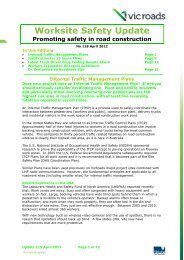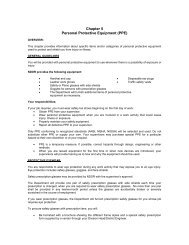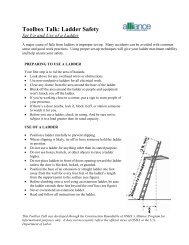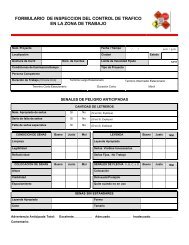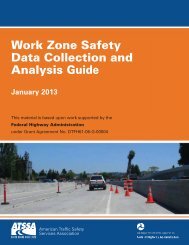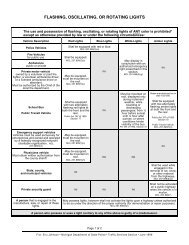California Joint Utility Traffic Control Manual - National Work Zone ...
California Joint Utility Traffic Control Manual - National Work Zone ...
California Joint Utility Traffic Control Manual - National Work Zone ...
Create successful ePaper yourself
Turn your PDF publications into a flip-book with our unique Google optimized e-Paper software.
<strong>California</strong> <strong>Joint</strong> <strong>Utility</strong> <strong>Traffic</strong> <strong>Control</strong> <strong>Manual</strong><br />
<strong>California</strong> <strong>Joint</strong> <strong>Utility</strong> <strong>Traffic</strong> <strong>Control</strong> <strong>Manual</strong><br />
Fundamental Principles:<br />
The needs and control of all road users (motorists, bicyclists and pedestrians within the<br />
highway including persons with disabilities in accordance with the Americans with<br />
Disabilities Act of 1990 (ADA) Title II, Paragraph 35.130) through a temporary traffic<br />
control (TTC) zone shall be an essential part of highway construction, utility work,<br />
maintenance operations and the management of traffic incidents.<br />
Those using the roadway (motorists, bicyclists and pedestrians), worker safety at the job<br />
site and accessibility in TTC zones should be an integral part of every project initiated in<br />
the planning phase and continuing through design and construction. In a like fashion,<br />
maintenance and utility work should be planned and conducted with the safety and<br />
accessibility of all motorists, bicyclists, pedestrians (including those with disabilities) as<br />
well as the safety of those workers performing the work.<br />
NOTE: <strong>Work</strong> around a railroad or highway rail grade crossing will require early<br />
coordination with the railroad company prior to work planning.<br />
To provide safety for motorists, bicyclists, pedestrians, workers, enforcement/emergency<br />
officials and equipment at the job site, the following factors must be considered:<br />
1. Safety principles governing the design of permanent roadways and roadsides should<br />
also govern the design of temporary traffic control zones. The goal should be to<br />
route road users through such zones using roadway geometrics, roadway features<br />
and temporary traffic controls as nearly as possible comparable to those for normal<br />
highway/traffic situations.<br />
2. A temporary traffic control plan should be prepared and understood by all<br />
responsible parties before the site is occupied. Any changes in the TTC plan shall<br />
be approved by the Engineer of the public agency or authority having jurisdiction<br />
over the highway.<br />
Road user movement should be inhibited as little as practical, based on the following<br />
considerations:<br />
1. TTC at work and incident sites should be designed on the assumption that<br />
drivers will only reduce their speeds if they clearly perceive a need to do so.<br />
2. Frequent and abrupt changes in geometrics such as lane narrowing, dropped<br />
lanes or main roadway transitions that require rapid maneuvers should be<br />
avoided.<br />
3. Provisions shall be made for the reasonably safe operation of work, particularly<br />
on high-speed, high-volume roadways.<br />
4. Road users should be encouraged to use alternative routes that do not include<br />
TTC zones.<br />
5. Bicyclists and pedestrians, including those with disabilities, should be provided<br />
with access and reasonably safe passage through the TTC zone.<br />
10



